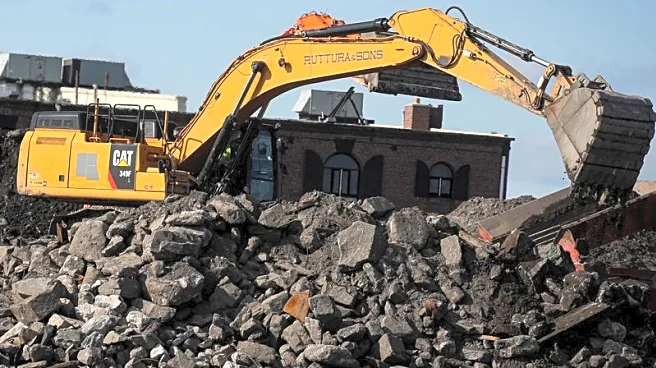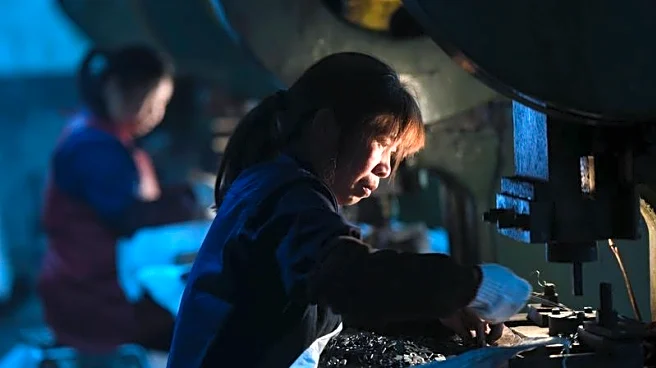What's Happening?
The Institute of Supply Management (ISM) reported that the Manufacturing PMI fell to 48.7% in October, marking the eighth consecutive month of contraction in the U.S. manufacturing sector. This decline
is 0.4 points lower than September's figure of 49.1%, indicating a faster rate of contraction. Among the five subindexes that contribute to the Manufacturing PMI, only supplier deliveries remained in expansion territory. The production index fell into contraction, and while new orders and employment indexes improved slightly, they remained below the 50% threshold, indicating ongoing contraction. Six manufacturing industries, including primary metals and transportation equipment, reported growth, but only two of the largest sectors expanded. Respondents expressed concerns over tariffs, strained business conditions, and low sales, with some noting difficulties in reshoring production and passing increased costs to customers.
Why It's Important?
The continued contraction in the manufacturing sector is significant as it reflects broader economic challenges, including the impact of tariffs and global economic uncertainty. Manufacturing is a critical component of the U.S. economy, and prolonged contraction could lead to job losses and reduced economic growth. Industries reliant on imports face increased costs due to tariffs, which can affect pricing and competitiveness. The sector's struggles may also influence policy decisions and economic strategies aimed at revitalizing manufacturing and addressing trade imbalances. Stakeholders, including businesses and policymakers, must navigate these challenges to stabilize and potentially grow the sector.
What's Next?
The manufacturing sector's future will likely depend on policy responses to tariffs and trade relations, as well as efforts to stimulate domestic production. Businesses may need to adapt by finding alternative supply chains or investing in technology to improve efficiency. Policymakers might consider measures to support the sector, such as incentives for reshoring or investments in infrastructure. The ongoing economic uncertainty could lead to further adjustments in business strategies and government policies aimed at fostering a more resilient manufacturing industry.












